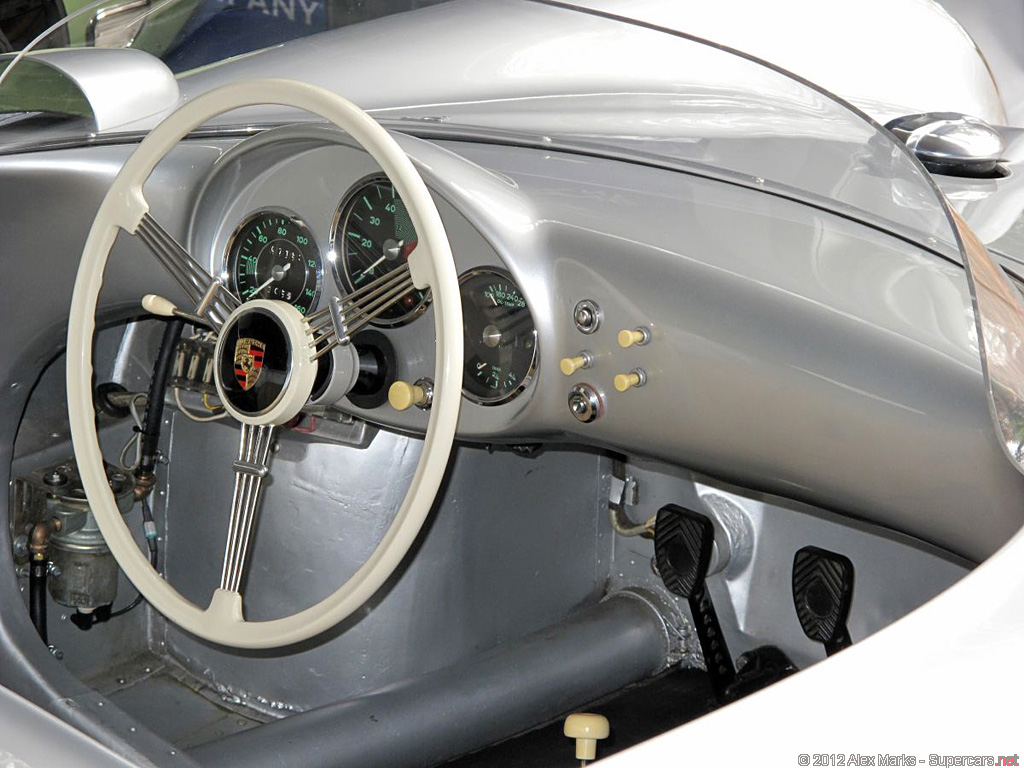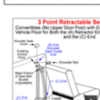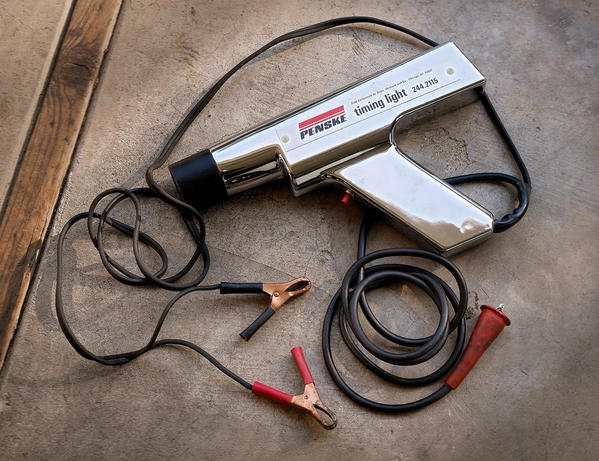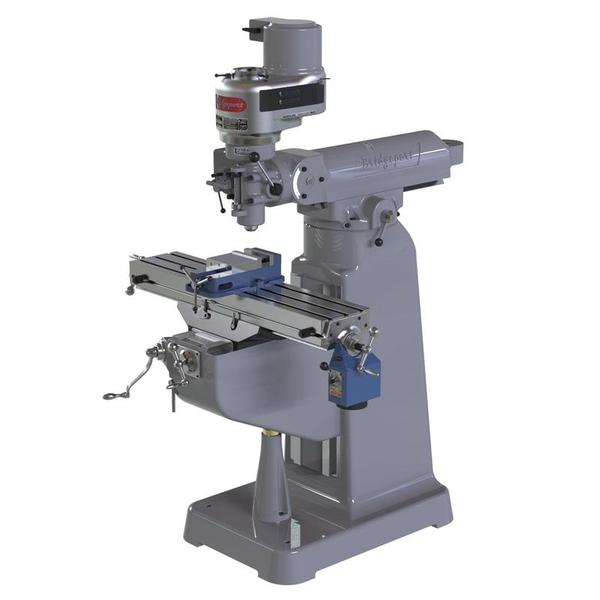Belly blog. "Keep the shiny side up" no longer has meaning for this car.
Attachments
Into punch-list for pre-paint prep: cut aluminum sheet for front bulkhead. Painted front bulkhead; smoothed fiberglass under dash, marked sides for torsion bar ports, smoothed horn pockets and rivet dits under front valance, retrieved gas tank; cut out scrutal intrusion, test-fit filler (hood hole needs embiggening).
Tomorrow: fiberglass. What I hope will be the last of it on this car.
After that: fit up the headlights, tail lights, license plate light and windshield.
This is happening, people.
Attachments
Fuel tank area filled. Light plinths marked. I have the "good" Fibersteel lights kit.
Cut the torsion bar ports. Got up under the front fenders to see about making the shapes right, and smooth.
Attachments
“cut out scrutal intrusion”
Ouch!
I don't even wanna look that one up....
Yeah, that sounds very... personal, Ed. ![]()
It's a scrotal intrusion you should be worried about, guys...![]()
Attachments
Yeah, but before the "scrutal intrusion" fix-up you probably wore "Top Siders"....
Attachments
It's a Spyder and big feet thing. I need to neuter mine.
I just mark edge of hole I want and cut biggest hole with what I have then sand with a sanding drum on a drill.

edsnova posted:Hole saws cost!
Welcome to my world, buddy. Two guys in our little refrigeration boutique burn though a couple hundred bucks a month in tools. Anything with teeth or aggregate is especially prone to cost big money.
Hole saws are expensive for using it for a one time use. I pencil side the hole onto the fiberglass and rough cut it inside the line and use a drum sander on a drill to quickly finish it.
I respectfully disagree. First, you purchase the arbor(I bought Lenox), then individual saws as needed. In fiberglass work they LAST, maybe not so in Stan's line of work, but for the hobbyist they certainly do. I started out with the arbor and one saw to enlarge my turn and taillight holes for the original style lights. Now I have 5 or 6 different sizes. I do admit the larger ones are more expensive but I do like having the proper tools for the job.
I have used the saws many times since they were purchased for a single use.
... and that's how it is with tools. If you buy the right ones, you'll surprise yourself how often you'll end up using them (as long as they aren't super-specialized). Tools are just good to have, even if you don't use them for months (or years) at a time. That's why Dr. Clock's giant shop purge shocked me in the extreme.
My dad would spend an inordinate amount of time working around not having the tools or materials he would've liked for a particular project. My theory is that tools are very, very cheap (no matter what they cost)- it's labor that is horribly expensive, even if it's your own.
You only have one chance at this life. Spending time uselessly trying to make the wrong tool work is not how I want to spend mine.
fwiw, most of the hole saws I have are from "the Dr. Clock Collection."
I thought was for a one time usage , but totally agree with Danny and Stan too that I should have kept some of the Speedster shop inventory. Nothing more demoralizing than having to go buy jack stands from NAPA .........
I agree with Stan I find myself having more time these days and I have been accumulating some practical tools for my Harley’s woodworking and of course my car since I have more time I have my favourite stores that I go to these days you can receive their flyer in your inbox and if you find something that would be handy for a job that you’re doing or you foresee doing then you can buy that quite reasonably
A few years ago I got myself a really nice Dewalt tablesaw that can cut 24 inch i am having a little fun Building all my garage cupboards with it
Dr. Clock so wisely wrote: "Nothing more demoralizing than having to go buy jack stands from NAPA ........."
And so we all see another example of the "Circle of Life."
Build and have a nice home, have a few kids, a car or two, set up a nice shop to build things for the kids and then fix the stuff that the kids break. Then the kids get lives of their own and are gone so you"downsize" to a smaller home and, in the process, can't justify all that "stuff" that used to take up a lot of shop/garage space and was so important to you "back then" so you jettison it to save space. After moving in to the new place and spending days sitting around with nothing to do, you go nuts and break things, just so you can go out and get some tools to fix them. It's a primal urge that can not, nay, should not, be ignored.
I did that three times now, but the last move was way better because we sold one place and kept the other so everything got consolidated here. THAT's why I'm out of space for any new (read that "large space sucking") tools.
I'm just waiting for projects to show up needing my full set of 1" drive sockets (1-1/4" to 4"), or my set of four sizes of ball-joint pickle forks, or my 10" table saw, or my 200 lb. blacksmith anvil, or my hole saws from 1/2" - 6", or BOTH a MIG and TIG welder (and you know how well I can weld) or a large Oxy/Acetylene torch set-up or.....
You get the idea, but Heaven forbid, the day after I give away a tool, I'm sure I'll desperately need it.
I regret that I have but one "like" to give Gordon's comment. Tools should never, ever be "gotten rid of".
Ever.
They can tend to “walk”, though, so I now keep the shop locked. Used to let neighbors use what they wanted but found tools going out and not coming back (or coming back damaged). Now only my son and my “second-son-from-another-family” neighbor next door get in. Order has returned to my “Circle of Life”.
And whassup with Google? They’ve now made it far tougher to poach images!
No “Rafiki” for you guys!
Screen shots still work ![]()
Yeah, that's true, but that's so............ 1990's, don'cha think?
Stan Galat posted:... and that's how it is with tools. If you buy the right ones, you'll surprise yourself how often you'll end up using them (as long as they aren't super-specialized). Tools are just good to have, even if you don't use them for months (or years) at a time. That's why Dr. Clock's giant shop purge shocked me in the extreme.
My dad would spend an inordinate amount of time working around not having the tools or materials he would've liked for a particular project. My theory is that tools are very, very cheap (no matter what they cost)- it's labor that is horribly expensive, even if it's your own.
You only have one chance at this life. Spending time uselessly trying to make the wrong tool work is not how I want to spend mine.
Basis for the axiom "...you're more likely to injure yourself trying to cut with a dull knife than a proper sharp knife." ![]()
But it makes me wonder how many of us have had tools for years (decades, even) that we haven't touched and yet still refuse to pitch? I have a bunch of Flathead V8 specialty tools from my Hot Rod days; Valve spring tools to get the keepers on, corkscrew wires for replacing the mainseals, etc. I still have a Sears Dwell/Tach that only goes down to 6 cylinders ![]() and a bunch of tools for snowmobiles, but I still use the very same soldering gun I used to build my first Ham Radio transmitter back in 1960. It's got a lot of electrical tape holding it together, but it reliably works.
and a bunch of tools for snowmobiles, but I still use the very same soldering gun I used to build my first Ham Radio transmitter back in 1960. It's got a lot of electrical tape holding it together, but it reliably works.
I refuse to give up the 10" Skillsaw that I keep up on top of my shop cabinets, though. At about 15 pounds, it feels like you're hefting a small car but it built my Dad's house and still runs. I have, and use very often, his carpenter's hammer, too. That's not going anywhere, either.
FWIW, I have had a small soldering iron for, oh I dunno, 35 years. Just bought a new one, with a nice little stand, variable heat transformer, all of which the old one did not have, and so made using it a bit of a trick, sometimes. So I was like Stan's father, kinda -- work around, make do. I find the older I get, the more I don't like that approach. Need a tool? Go buy it. Nothing quite like having the right tool for the right job. Not saying there isn't a certain pleasure from jurry-rigging something up to do a certain thing out of stuff just hanging around. [This latter approach seems to suit Ed a lot. No offense Ed.] Like the 2x4 disk brake pads I saw a pic of recently.
Slowly building up the tool kit. Many, many years of McGyvering everything (mainly from lack of money) have left me with some bad habits. But I do OK, mostly.
Put a scratch coat of primer under the dash today. I hate working with filler and stuff under there; it's just a fiberglass blizzard. So I'm gonna leave it a little rough, probably.
While I was down there (and to get away from the fiberglass blizzard) I made this nifty bracket for the floor-mounted dipper switch.
I don't know what the right tools would be to make this, but the vice, a couple clamps, and a channel lock did the trick.
Here's what the real deal looks like (well it's mostly behind the clutch pedal in this shot):

Gonna have to figure out how to run both the floor and the signal stalk switches, I think. Since the lights will be on relays, I'm hoping it won't be too hard to do.
Trying to get the binnacle sorted for the new gauges and it's fighting me. The hole saws wobble and bind. The overall shape of the gauge pod is asymmetrical. The pod is also smaller than an original Spyder's. It's just eating up hours right now. But it's the kind of thing you can't half-ass like the finish of the underside of the gas tank cradle that no one will ever see.
Attachments
Old tool story.
In 1968, I was very young.
I'd just gotten my first brand new car and I intended to lavish upon it the very best service that money could buy. Which meant taking it to the dealer, right?
OK, like I said, in 1968 I was very young.
The geniuses at the BMW dealer somehow managed to screw up my very first oil change. I didn't realize it at the time, but this may have had a lot to do with me eventually becoming a cynical, bitter old man.
The gasket on the oil filter somehow got folded back on itself and the filter screwed down tight. It must have leaked, so the geniuses would have cranked down on it even harder until it didn't leak. Imagine how hard that would have been. And what it must have done to the gasket.
Miraculously, it held for a few miles. But then it didn't. And it didn't in a rather catastrophic way one winter's evening in the middle of rush hour traffic, in a Philadelphia neighborhood where you didn't stop passers-by to ask for help.
I decided then and there, I could do at least as good a job at routine maintenance as the certified geniuses at the dealership and went off to get some tools, to the only place anyone went for tools in 1968 - Sears and Roebuck. It was 'and Roebuck' back then.
Along with the basic socket sets, screwdrivers, wrenches, feeler gauges, and sundry shiny gizmos, was a gen-u-whine Roger Penske timing light. I think I've since figured out that both Sears and Roger Penske were learning the art of making money through branding. It's unlikely that Roger Penske was personally involved in the design or manufacture of my timing light.
Did I mention, in 1968 I was very young?
As it turned out, I was unable to use my gen-u-whine Roger Penske timing light to set the timing on my BMW 1600. Unlike every other car in Christendom, there were no timing marks on the crank pulley. Instead, there was, allegedly, a small ball bearing pressed into the edge of the flywheel which one was supposed to be able to see by pointing a timing light through a small cutout slot in the bell housing. Honest, I'm not making this up.
In theory, you'd point the timing light down through the slot, slowly turn the distributor, and at the proper moment, the ball would magically appear and you'd be timed. Well, maybe you would be, but I never was. Through another 31 years and two other BMW's, I never was. I never ever saw that freakin' ball bearing. To this day, I think there is a room full of technical writers in Munich laughing their asses off about the ball bearing on the flywheel timing joke.
So what about my gen-u-whine Roger Penske timing light?
Well, since everyone but Dr. Clock holds onto all their tools forever, it languished unused in a series of garages, basements, and attics over the years, in its original box. With cars being what they are today, I figured I'd never use it and someday maybe pass it on to the Smithsonian or maybe Madame Tussaud's wax museum.
And then, believe it or don't, one day about four years ago, I suddenly found this ridiculous new car in my garage with a brand new motor that had been designed in the 1930s. And it had a crank pulley that wasn't hidden behind some dumb plastic shroud. And a distributor I could adjust. And on the crank pulley were - timing marks! That I could actually see!
So, I finally discovered, after 46 years, that Roger Penske allowed his name to be stuck on a halfway decent little timing light.
Never throw away good tools.
Attachments
Oh, dem fu#!ing hole saws. Ask Drake about those . . .
There has to be a better way.
Sacto: excellent story, well said. My timing light was a 6 v flashlight bulb and bare socket I connected to two aligator clips and would clip across the points and slowly rotate the engine until the light went out and check to see if the pulley was at the right position. Adjust dizzy as needed. Talking about a '56 A Coupe here, and conducted precisely as my Owners Manual advised. Called static timing, and was goodnuff. Going to a dealer, or even a decent P-car garage was out of the question. While you were merely young, I was both young and poor.
Attachments
PS: I upgraded my timing light tool kit along the way with a neon bulb sort of thing that you hooked in line with the #1 high tension lead from dizzy to spark plug. Allowed dynamic timing setting. The flashing light was rather dim, actually, and so the operation was best done in a dark garage. Did I mention I was poor?? Ergo, no garage, so this tool was best used at night. I actually bought a timing light much like the one you show here a couple of years ago and really upped my game. Came at a time when I was/am not so poor, so could spring for this high-tech version with very bright light. Also I now can afford the garage. And can do the deed whenever I want.
As to the milling machine, a half decent drill press and properly applied C-clamp might also work. There are many things I could accomplish with unlimited money and space.
Thanks, Kelly.
The timing light procedure was described in the car's owner's manual (not the shop manual).
There were detailed, illustrated procedures for doing everything - carb adjustment, valve clearance, plug and point gaps, - even brakes! I guess they figured most owners in Germany then would have a timing light handy.
I think Porsche had a similarly detailed owner's manual for the 356.
Different times those were.
Reading everyone's story of stocking piling tools made me smile as my dad did the same. He believed in having the right tools and made every excuse to buy more. He passed a few years back now but it made me think of all the tools I am still trying to figure out what they were used for as I inherited most... as my siblings had no interest. I have a valve spring compressor that I have no idea what it works on... Maybe it's for that flathead someone mentioned...then lo and behold Sacto pulls out the gen-u-whine Penske special timing light. The same one dad and I used on every car we worked on together and now resides in the "Sears Craftsman" rolling tool box in my garage. Great story Sacto!
Attachments
Blog update on my Spyder build.
Fuel tank, fuel cap (properly located), is coming together finally after 10 months.

Anyone catch the Spyder's oil filled heating system Ed installed ?








